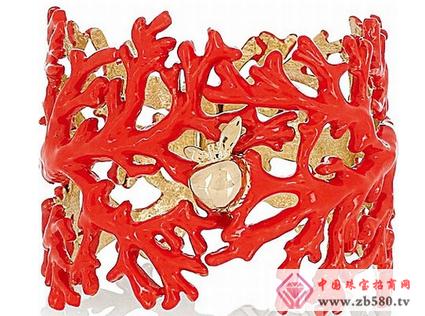The South China Sea of ​​the motherland has bred countless lives, and has cultivated a variety of red corals, wrapped in the crystal clear tropical sea, as if wearing a misty gauze. But see it shine, arguing, and the morning glow of May and the spring of March. The red agate-like thick branches are fine and pliable, lustrous and moist, seemingly transparent, and have a tree-like texture on both the surface and the section. More interestingly, red coral corals are white.
When the night falls, the white corals greet the rising tide, sticking out the soft tentacles, like the pulp of a branching ship. Suddenly, it contracted like an electric shock. Ah, it hunted a small creature and couldn't wait to send it to the entrance. It didn't look like it had no digestive system, but it had a unique way of digestion. The food was digested by the veins of its skin. And it secretes a powdery substance, which is calcareous. It is it that makes the red coral's bones bigger. The body is getting higher.

Red coral is mainly distributed on the coral reefs or rocks of the South China Sea and its islands such as Xisha, Dongsha, Zhongsha and Nansha. They coexist in one branch, both to nourish the body together, and each to breed, thus forming a dendritic shape, bright red color, long-lasting, and divided into two male and female. Their breeding eggs are combined with sperm, and the old red coral worms die, leaving a hard skeleton. The next generation of polyps continued to build their "home" on the remains of the older generation. A half-pound of red coral, gathering more than 25,000 polyps, can be described as a huge family. These red corals grow on the bottom of the sea and can trap fish and act as a reef. Fishermen often cast thorn nets around the sea where they grow, capturing the economic fish that they trap.
Beautiful and charming red coral, it has been a precious ornamental product since ancient times. As early as in the early years of the Western Han Dynasty, some people in the Lingnan area sent it as a tribute to Changan for the emperor to watch. "Chinese Ancient History" records: Ming Zhen, the eunuch of the eunuch, "there are more than 60 stocks of gold and silver, and the corals are six or seven feet tall." In the Forbidden City Museum in Beijing, there is still a huge red coral in the Imperial Palace of the Ming and Qing Dynasties. On the dragon case of Emperor Guangxu, the bed of the Queen Mother of the Summer Palace, the red coral, is placed in a white jade bottle, which is extraordinarily expensive. Elegant, it becomes a symbol of status and wealth in a certain sense. In the Taiwan Provincial Museum of China, a giant red coral collected in October 1980 and dating for more than 300 million years has been exhibited. Its trunk has 5 branches, 70 cm wide and 125 cm high. 70 kilograms is the most red coral in the world. In recent years, with the scientific investigation and the harvesting technology, these gorgeous and blushing secrets of the seabed have entered the international treasure market in large quantities, and they can compete with gold and silver, and jewels, some worth tens of thousands to hundreds of thousands of dollars. It is no wonder that red coral has become a national first-class protected wild animal.
Red coral is also a traditional Chinese medicine. As early as in ancient times, "Tangmucao" had records of red corals "going to the eyesight, calming the nerves, treating pain and spitting". It is very effective for treating eye diseases, convulsions, water and fire, heart and lung stagnation, and vomiting blood. Red corals living in the modern ocean contain steroids and substances that are required by the human body to be studied as medicinal organisms.
Beach Slippers,Beach Flip Flops,Beach Footwear,Beach Slide Sandal
Huaying Shoes Co. Ltd , https://www.hya3shoes.com